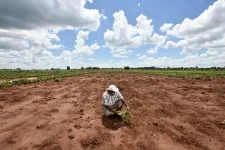The findings of the two studies, published in The Lancet and The Lancet Oncology, highlight an urgent need to improve cancer surgery provision in low- and middle income countries, while also scaling-up their workforces in order to cope with increasing demand. Until now, a lack of data examining outcomes of cancer surgery in different income settings, and an absence of evidence-based estimates of future demand, had limited efforts to improve cancer care globally.
Cancer is a leading cause of death and disability globally, and exerts substantial economic impacts, with recent evidence suggesting a disproportionate burden of disease in LMICs. With more than half of cancer patients predicted to require surgery at some stage, it is a pivotal component of multidisciplinary care globally and plays a key role in preventing deaths. A 2015 study estimated that US$6.2 trillion in global GDP could be lost by 2030 if surgical cancer systems are not improved. [1]
While the new studies did not assess impacts of COVID-19, the authors acknowledge that the delivery of high-quality post-operative care is more challenging during the pandemic.
Increasing future demand
The Article in The Lancet Oncology journal is a modelling study of global demand for cancer surgery and estimated surgical and anaesthesia workforce requirements between 2018 and 2040.
Using best-practice guidelines, patient characteristics and cancer stage data, the authors calculated the proportion of newly diagnosed cancer cases requiring surgery in 183 countries. To predict future surgery demand, they applied these rates to GLOBACAN cancer incidence predictions from 2018 to 2040.
The team's analysis estimates that the number of cancer cases requiring surgery globally each year will rise from 9.1 million to 13.8 million (52%, an increase of 4.7 million) from 2018 to 2040. The greatest relative increase will occur in 34 low-income countries, where the number of cases requiring surgery is expected to more than double by 2040 (314,355 cases to 650,164, 107%).
Current and future surgical and anaesthesia workforces needed for the optimal delivery of cancer surgery services were also predicted using staffing estimates based on optimal surgical use in high-income countries as a benchmark for global requirements. To evaluate staffing gaps, the optimal estimated workforce (median workforce of 44 high-income countries) was compared with numbers of surgeons and anaesthetists in each country.
The authors estimate there is currently a global shortage of 199,000 (56%) surgeons and 87,000 (51%) anaesthetists (current workforce of 766,000 surgeons and 372,000 anaesthetists, compared with 965,000 and 459,000 optimal workforce, respectively, estimated by the team's model). The gap is estimated to be greatest in low-income countries, where the current surgeon availability is 22,000 fewer than the model estimated optimal number of 28,000 surgeons. The current number of anaesthetists in low-income countries falls 11,000 below the model estimated demand of 13,000 anaesthetists.
In recognition of the rising global demand for cancer surgery, estimates were calculated for the optimal surgical and anaesthesia workforces needed in 2040. Extrapolating 2018 data, taking account of predicted future cancer incidence burden in each country, revealed that the surgical workforce will need to increase from 965,000 in 2018 to 1,416,000 (47% increase) in 2040. The anaesthetist workforce would need to rise from 459,000 in 2018 to 674,000 (47% increase) in 2040.
The greatest relative increase in optimal workforce requirements from 2018 to 2040 will occur in low-income countries, where surgeon numbers are required to rise from 28,210 to 58,219 by 2040 (106%). Anaesthetist numbers will also need to increase from 13,000 to 28,000 by 2040 (115%).
However, to match the current benchmark of high-income countries, the actual number of surgeons in low-income countries would need to increase almost 400% (increase from 6,000 to 28,000), and anaesthetists by nearly 550% (increase from 2,000 to 13,000), of their baseline values. This is because the current workforce in these countries is already substantially smaller than in high-income countries.
Dr Sathira Perera, from the University of New South Wales, Australia, said: "Our analysis has revealed that, in relative terms, low-income countries will bear the brunt of increased future demand for cancer surgery, bringing with it a need to substantially increase numbers of surgeons and anaesthetists. These findings highlight a need to act quickly to ensure that increasing workforce requirements in low-income countries are adequately planned for. There needs to be an increased focus on the application of cost-effective models of care, along with government endorsement of scientific evidence to mobilise resources for expanding services." [2]
Estimates in the study relied on several assumptions. Predictions of future cancer rates were based on 2018 estimates, however, country-level changes - such as economic developments or altered capacity to screen for early diagnosis - could alter cancer incidence and therefore surgical demand and workforce requirements. Observed gaps in the workforce could also be narrower than the actual gaps in practice, as predictions were conservative because they only considered initial surgical encounters and did not account for any follow-up interactions.
Cancer surgery outcomes
The Article in The Lancet is an observational study exploring global variation in post-operative complications and deaths following surgery for three common cancers.
Deaths among gastric cancer patients were nearly four times higher in low/lower middle-income countries (33 deaths among 326 patients, 3.72 odds of death) than high-income countries (27 deaths among 702 patients).
Patients with colorectal cancer in low/lower middle-income countries were also more than four times more likely to die (63 deaths among 905 patients, 4.59 odds of death), compared with those in high-income countries (94 deaths among 4,142 patients). Those in upper middle-income countries were two times as likely to die (47 deaths among 1,102 patients, 2.06 odds of death) as patients in high-income countries.
No difference in 30-day mortality was seen following breast cancer surgery.
Similar rates of complications were observed in patients across all income groups, however those in low/lower middle-income countries were six times more likely to die within 30 days of a major complication (96 deaths among 133 patients, 6.15 odds of death), compared with patients in high-income countries (121 deaths among 693 patients). Patients in upper middle-countries were almost four times as likely to die (58 deaths among 151 patients, 3.89 odds of death) as those in high-income countries.
Patients in upper middle-income and low/lower middle-income countries tended to present with more advanced disease compared with those in high-income countries, however researchers found that cancer stage alone explained little of the variation in mortality or post-operative complications.
Between April 2018 and January 2019, researchers enrolled 15,958 patients from 428 hospitals in 82 countries undergoing surgery for breast, colorectal or gastric cancer. 57% of patients were from high-income countries (9,106 patients), with 17% from upper middle-income countries (2,721 patients), and 26% from low/lower middle-income countries (4,131 patients). 53% (8,406) of patients underwent surgery for breast cancer, 39% (6,215) for colorectal cancer, and 8% (1,337) for gastric cancer.
Assessing hospital facilities and practices across the different income groups revealed that hospitals in upper middle-income and low/lower middle-income countries were less likely to have post-operative care infrastructure (such as designated post-operative recovery areas and consistently available critical care facilities) and cancer care pathways (such as oncology services). Further analysis revealed that the absence of post-operative care infrastructure was associated with more deaths in low/lower middle-income countries (7 to 10 more deaths per 100 major complications) and upper middle-income countries (5 to 8 more deaths per 100 major complications).
Professor Ewen Harrison, of the University of Edinburgh, UK, said: "Our study is the first to provide in-depth data globally on complications and deaths in patients within 30 days of cancer surgery. The association between having post-operative care and lower mortality rates following major complications indicates a need to improve care systems to detect and intervene when complications occur. Increasing this capacity to rescue patients from complications could help reduce deaths following cancer surgery in low- and middle-income countries.
"High quality all-round surgical care requires appropriate recovery and ward space, a sufficient number of well-trained staff, the use of early warning systems, and ready access to imaging, operating theatre space, and critical care facilities. While in this study it wasn't possible to assess cancer patients' full healthcare journey, we did identify several parts of the surgical health system, as well as patient-level risk factors, which could warrant further study and intervention." [2]
The authors acknowledge some limitations to their study. Researchers only looked at early outcomes following surgery, but, in future, they will study longer-term outcomes and other cancers. Outcomes can be poorly captured and understood in settings with limited resources, which will have affected the team's findings on the effectiveness of surgery. Further detailed analysis is needed to provide more robust evidence regarding associations between patient outcomes and hospital facilities.
INFORMATION:
Peer-reviewed / 1 Observational study + 1 Modelling study / People
NOTES TO EDITORS
Study 1 was funded by the University of New South Wales and the UK Research and Innovation (UKRI) Global Challenges Research Fund. It was conducted by researchers from the University of New South Wales, Australia, University of Toronto, Canada, Kings College London, UK, and the World Health Organization.
Country-level data from Study 1 is available in Supplementary tables 3, 4, 5, 6, 8, 9, 10 and 11 in the appendix.
Study 2 was funded by the National Institute of Health Research (NIHR). It was conducted by researchers from the GlobalSurg Collaborative and NIHR Global Health Unit on Global Surgery.
The labels have been added to this press release as part of a project run by the Academy of Medical Sciences seeking to improve the communication of evidence. For more information, please see: http://www.sciencemediacentre.org/wp-content/uploads/2018/01/AMS-press-release-labelling-system-GUIDANCE.pdf if you have any questions or feedback, please contact The Lancet press office pressoffice@lancet.com
[1] Sullivan R, Alatise OI, Anderson BO, Audisio R, Autier P, Aggarwal A, et al. Global cancer surgery: delivering safe, affordable, and timely cancer surgery. The Lancet Oncology. 2015; 16(11):1193-1224.
[2] Quote direct from author and cannot be found in the text of the Article.


